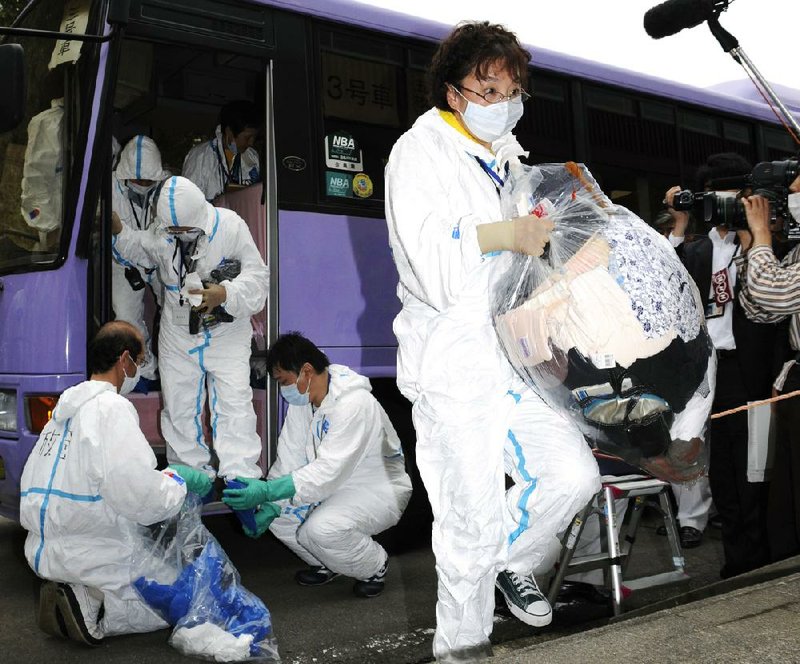TOKYO — Japan is letting up to 16,000 people back into their homes around its leaking nuclear power plant, easing restrictions in the no-go zone for the first time since last year’s disasters.
The residents won’t be allowed to stay overnight, some must wear protective gear and it’s unclear how many will return at all, but the step is crucial to permanently resettling towns vacated since the March 11, 2011, earthquake and tsunami devastated the Fukushima Daiichi plant and caused meltdowns in three of its reactors.
A 12-mile zone around the plant has been off-limits to about 100,000 residents for more than a year because of radiation contamination. But the plant was declared stable in December, with leaks substantially subsiding, and that let officials focus on how to clean up the contamination and allow some people to return.
On Friday, the government said it was rearranging the evacuation zone based on three categories of contamination, rather than by distance. The strict perimeter was long criticized as an inexact measure of safety, as radiation levels varied widely in the area and some hot spots existed outside the area.
The change affects three of the 11 municipalities inside the former evacuation zone.
“The reorganization would be the foundation for the reconstruction of the affected towns. We will thoroughly discuss how we can best accommodate their needs,” said Economy and Trade Minister Yukio Edano, who announced the step late Friday.
Starting Sunday, Tamura will allow all residents to visit their homes part time without protection or permission, but not sleep there just yet, and the town of Kawauchi will allow residents to visit, though they must wear protective gear in some areas.
Areas of Minamisoma fall into all three categories of contamination, but the town will allow residents to visit their homes in the least-contaminated areas in mid-April. Residents in the least-contaminated areas will be allowed to return permanently after further decontamination efforts.
Kawauchi mayor Yuko Endo welcomed Friday’s announcement and told public broadcaster NHK that “the revision comes at a right time just as the town tries to rebuild and reborn.”
He said, however, that residents have a right to choose whether to return to their homes right away.
The town office had moved to another part of Fukushima prefecture but moved into a part of Kawauchi just outside the evacuation zone earlier this month to help smooth the process of residents’ returning.
While the reclassification means about 16,000 people can return home fairly soon, it’s not clear how many will.
Most are waiting until the area is further decontaminated and infrastructure restored, and local officials have said towns may lose unity because of the three-way divisions.
Under the revised evacuation plans, areas with annual exposure levels estimated at 20 millisieverts or below are deemed safe for people to visit and prepare for their permanent return while being encouraged to make further decontamination efforts. Limited access is allowed for residents in areas with higher contamination - up to 50 millisieverts of estimated annual exposure. Places with annual exposure estimates exceeding that will remain off-limits.
Despite the government declaration that Fukushima Daiichi is stable, the plant is largely running on makeshift equipment and remains vulnerable. Officials have said it would take up to 40 years to fully decommission the highly contaminated plant that has three reactors with melted cores.
Decontamination efforts also are uncertain. Experts have said there is no established method, and more highly contaminated areas are difficult to clean up.
Environment Minister Goshi Hosono, also the nuclear-crisis management minister, said Friday that containing radiation release and keeping the plant stable is crucial to the return of affected residents.
Front Section, Pages 7 on 03/31/2012
